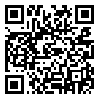Volume 20, Issue 81 (2023)
LIRE 2023, 20(81): 43-48 |
Back to browse issues page
Download citation:
BibTeX | RIS | EndNote | Medlars | ProCite | Reference Manager | RefWorks
Send citation to:



BibTeX | RIS | EndNote | Medlars | ProCite | Reference Manager | RefWorks
Send citation to:
Ghobadi H, Moradi A, Bozorg Bigdeli S, Parsapoor Z. Analyzing the mystical subjective experiences in Shams' Diwan Ghazliat based on Gadamer's hermeneutic theory. LIRE 2023; 20 (81) :43-48
URL: http://lire.modares.ac.ir/article-41-66347-en.html
URL: http://lire.modares.ac.ir/article-41-66347-en.html
1- , hghobadi@modares.ac.ir
Abstract: (1650 Views)
The depictions derived from the subjective mystical experiences, in Molvi's lyrical poetry, have not been analyzed specifically and independently, in one place and in a regular manner; Although in a general way, the types and branches of Molvi's imaginations and imagery have been included in the cycle of research. This research claims that Maulvi was able to express the pure images of his internal and intuitive experiences, which are generally indescribable, in the Ghazalyat of Shams, and this is a rare event that Maulvi went through and managed to express the most abstract experiences. In this research, which is based on the descriptive-analytical method, with library and citation tools, and in the theoretical framework of Gadamer's hermeneutics, after reviewing the opinions of various researchers about the separation of mystical experiences, those poems of Divan Shams which, in particular, are manifestations They are considered to be one of Molavi's personal mystical experiences, based on the current feeling in the ghazal, they are divided into four categories: pride and warning, reprimand and blame, the need to recognize oneself, and joy and forgiveness, and for example, a ghazal from each of these categories is examined. and analysis has been done.
Article Type: مقالات علمی پژوهشی |
Subject:
Classical literature
Received: 2021/06/27 | Accepted: 2022/01/31 | Published: 2023/09/1
Received: 2021/06/27 | Accepted: 2022/01/31 | Published: 2023/09/1
Send email to the article author
| Rights and permissions | |
 |
This work is licensed under a Creative Commons Attribution-NonCommercial 4.0 International License. |








